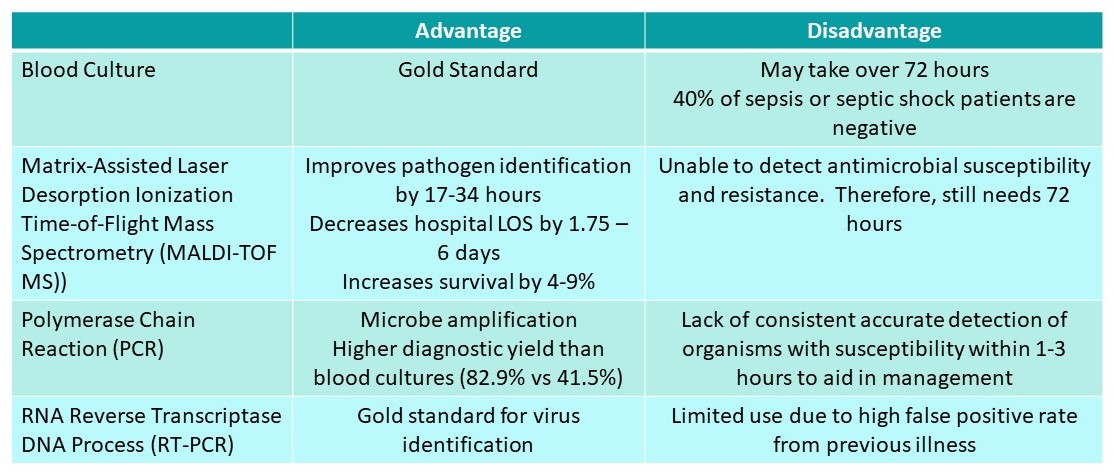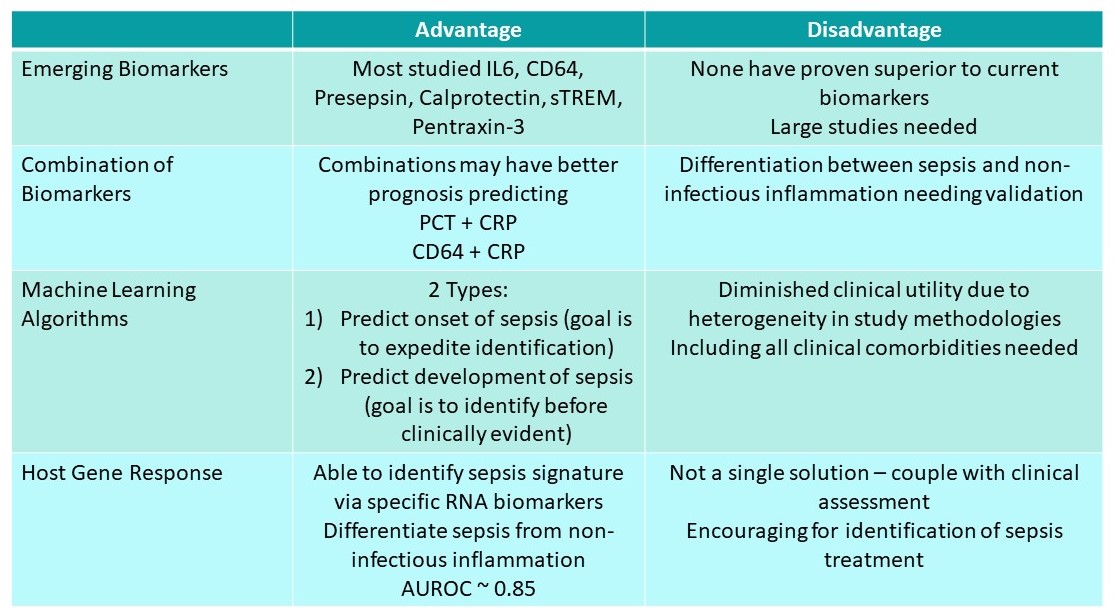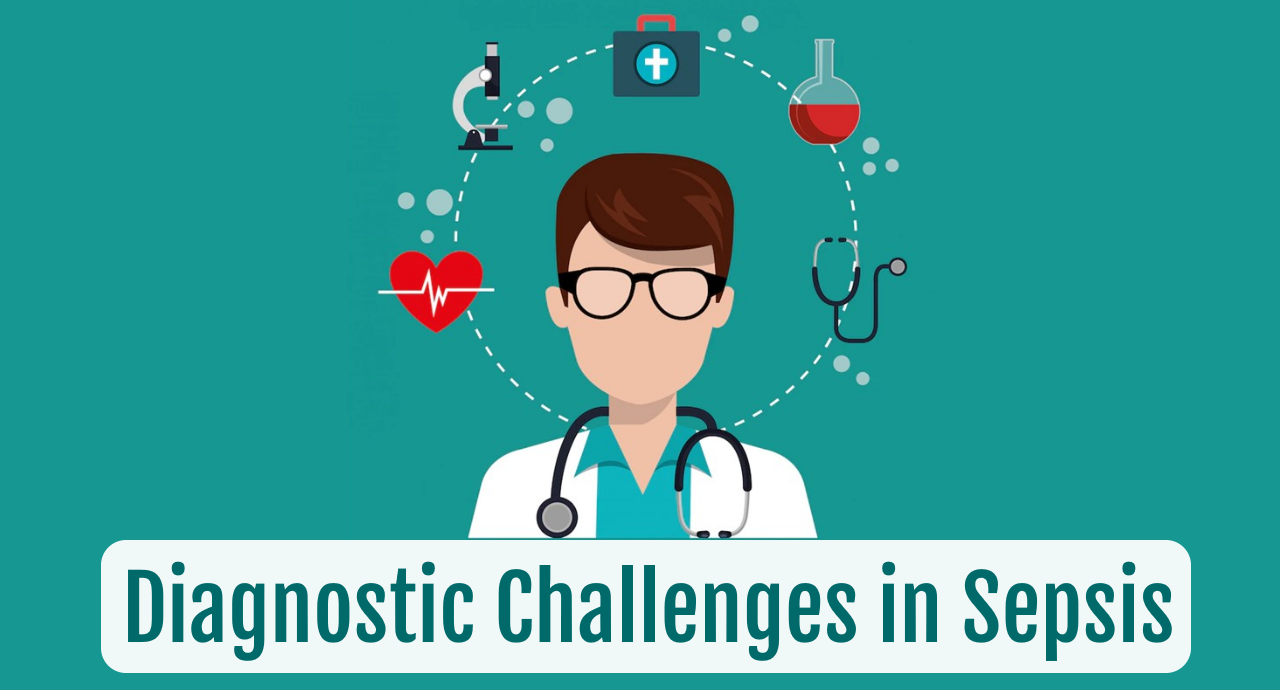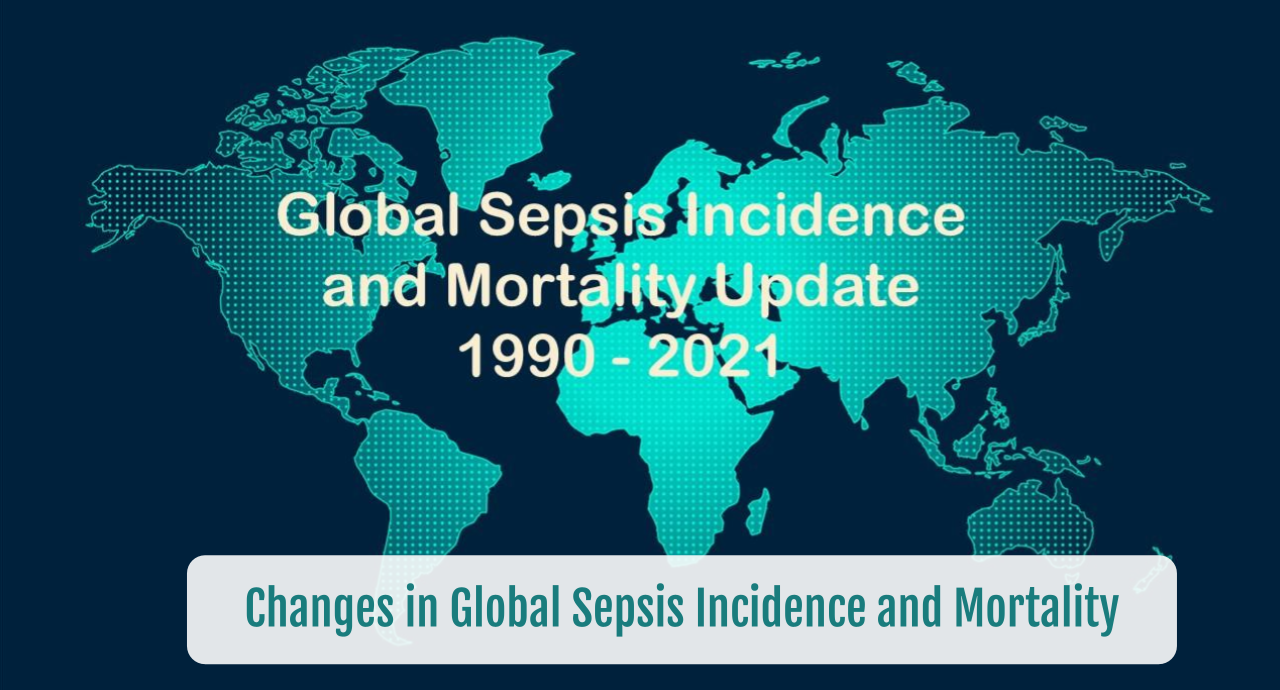Diagnostic Challenges in Sepsis
SUMMARY
- There remains no single tool to reliably identify sepsis.
- A variety of approaches exist as well as on the horizon in order to identify infection and sepsis.
- Identification must bridge the identification of infection with clinical assessment of the sepsis syndrome.
BACKGROUND
- Common biochemical markers and microbiological data are typically used to evaluate sepsis patients.
- While prompt identification and treatment is essential to improve outcomes, there is no “Gold Standard” available to identify these patients.
- Global collaborative efforts have provided guidelines in definitions and management approaches providing advancements.
- However, the lack of a reliable tool contributes to the high usage patterns of antibiotics.
REVIEW
SEPSIS SCREENING
- Applicability is subject to debate
- Every patient should be screened Every Day, Every Shift
- There are 2 ways to accomplish this:

COMMON LAB BIOMARKERS – value is debatable

MICROBIOLOGICAL DIAGNOSTIC TOOLS

NOVEL EMERGING APPROACHES

CONCLUSIONS
- Identification and treatment of sepsis must be based on thorough patient assessment and clinical judgement.
- Novel approaches will aid in this element of optimizing patient care
- Combining these models with patient data, comorbidities, biomarkers and gene markers seems the appropriate way forward at the present time.
To receive articles like these in your Inbox, you can subscribe to Sepsis Program Optimization Insights.
Erkan Hassan is the Co-Founder & Chief Clinical Officer of Sepsis Program Optimization where he designs & oversees the implementation of solutions to optimize sepsis programs.
To discuss your organization’s Barriers of Effective Sepsis Care, contact Erkan by phone (844) 4SEPSIS (844-473-7747), email (erkan@spo.icu), or video chat.





